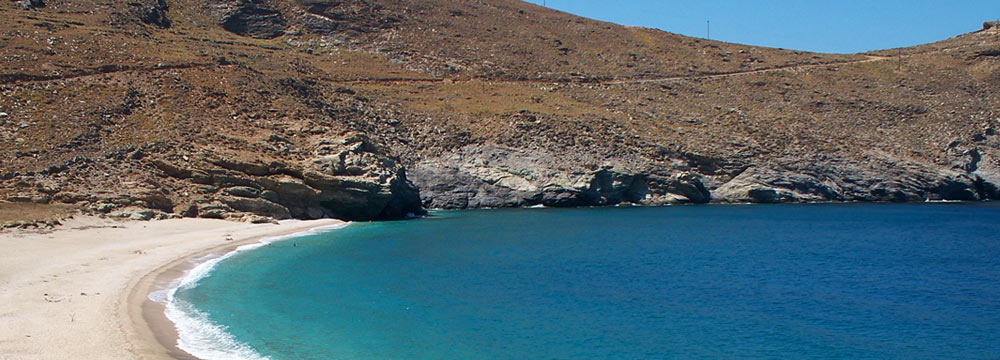Tower of Agios Petros
The Tower of Agios Petros was built in the Hellenistic Era (4th - 3th Century B.C.). It has a cylindrical shape and the part that remains today is almost 20m high. Around the building facilities for copper extraction are found which were in service until the beginning of the 20th century. The tower is built in a strategic position overlooking the valley of Gavrio and the sea.
Monastery of Zoodohos Pigi
The monastery of Zoodohos Pigi is the largest on Andros and, according to a tradition, it used to be a School during the Byzantine Era before becoming a monastery in 842 A.D. by Empress Theodora. It was renovated in the 16th century and again in the 20th century. In 1928 it changed into a nunnery. Hosted in the monastery is a library, an exhibition with utensils and vestments and a collection of prehistoric tools.
Paleopolis
Palaeopolis was an ancient settlement that prospered during the Classical Era. Today it is a charming village located on the hillside of mount Petalo, at the top of which waterfalls are formed. The ancient town was almost at sea level, near the port. There is a beautiful path leading towards the sea to the ancient port and passes near ancient ruins where one can admire some ancient Christian churches, huts partly made with ancient remnants and the old wall.
Ancient Zagora
Zagora peninsula can be reached after about 45’ hiking, following the path that starts from Stavropeda. The ancient Zagora (10th - 8th century B.C.) was located on a steep plateau on the Zagora peninsula. The settlement was protected by a strong wall. There is also a temple from the 8th century B.C. that operated until the Classical Era.
Pano Kastro
This castle was the largest and strongest settlement on the island, built by the Venetians on a plateau north form Korthi. Almost impregnable due to its fortification wall and difficult access, it fed a lot of rumors about its true story, as there is not enough information about its history. According to one theory, the Turks sent an old lady with her pregnant daughter to ask for help and to enter the castle. During the night she opened the gates and therefore the town was conquered. The old lady deeply regretted for her action and she committed suicide by dropping herself from a high rock into the sea. The castle took the name “castle of the old lady” (tis grias to kastro) and the beach “jump of the old lady” (tis grias to pidima).
Museum of Modern Art
The Museum was inaugurated in 1979 with its old wing exhibits sculptures of famous Greek artists. In 1986 the new building right opposite the old one was inaugurated, which is composed of a library, a projection room, a shop and an exhibition hall. Every summer since 1986, an exhibition is being organized here hosting important and famous artists’ works. Till nowadays there have been presented works of Greek and foreign artists such as Picasso, Matisse, Kadinsky, Giacometti, Chagall, Κlee, De Chirico, Rodin, Miro, Karagatsi, Paniaras, etc.
Archeological Museum of Andros
The Museum is operating since 1981 and its collection contains findings from the excavations in the ancient Zagora, as well as models and aero photographs. Sculptures from the Archaic and Roman era are also exhibited here, mainly coming from Paleopolis, together with inscribed plates, parts from Byzantine churches, the headless Kouroi, Hermes of Andros and the body of Goddess Artemis.
Archeological Museum of Paleopolis
Its collection contains sculptures, statues, coins and signs found in the excavations in Paleopolis. The most important exhibits are the marble lion, the marble statuette of Artemis and a marble plate with a hymn to Goddess Isis.
Kairios Library
The library was founded in 1987 and is housed since then in a neo-classical building in Andros Hora. It contains almost 60.000 volumes of scripts and manuscripts, a large archive about shipping tradition in Andros and other various works of art (pictures, paintings, ancient vases, statuettes and figures, etc). There is a department from which books can be lent and a fully equipped, modern workshop for bookbinding, book preservation and seminars.
Christmas in Greece is an experience in itself as it is a holiday celebrate...
Read more ›








 BACK TO LIST
BACK TO LIST